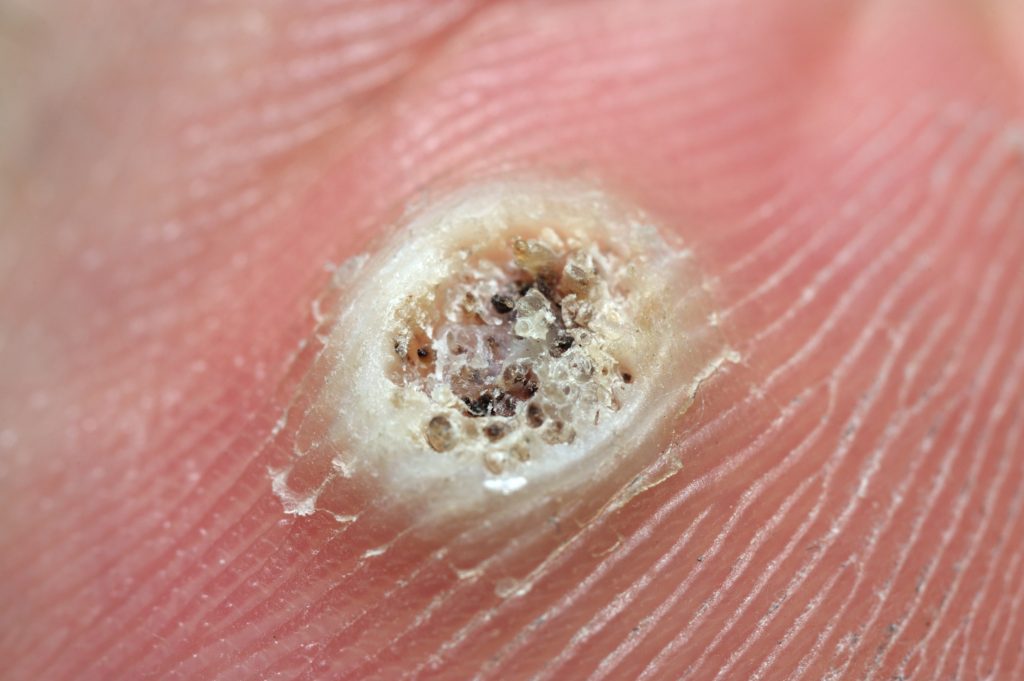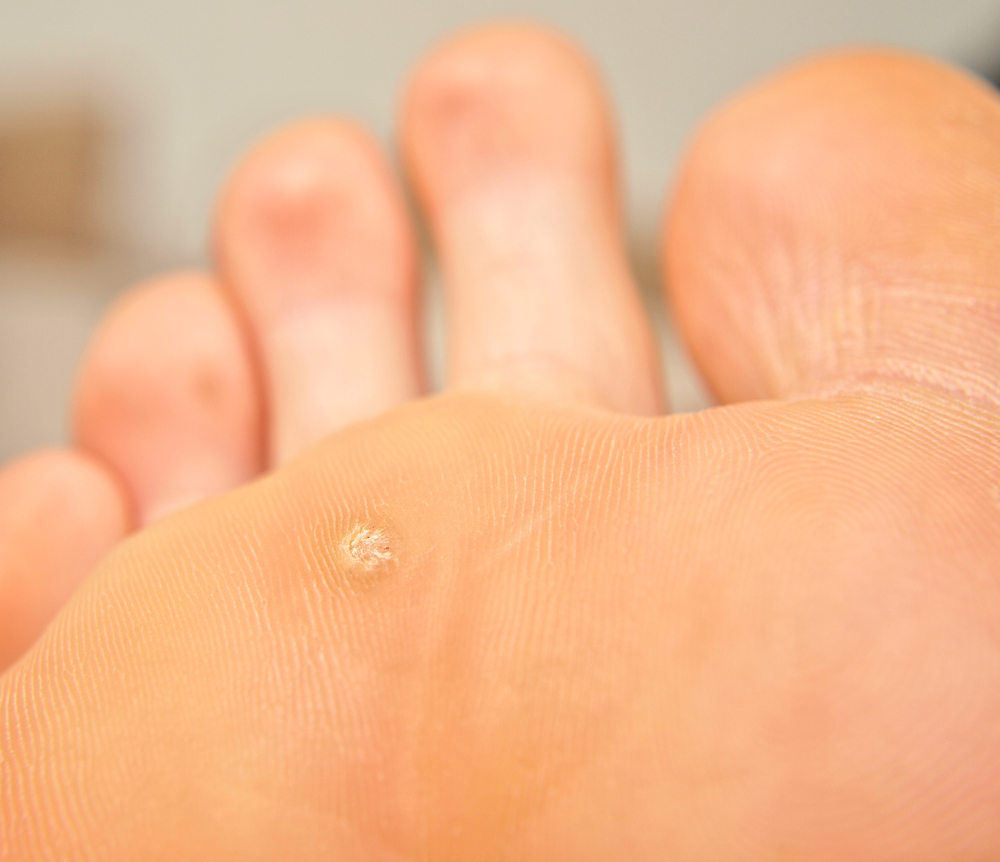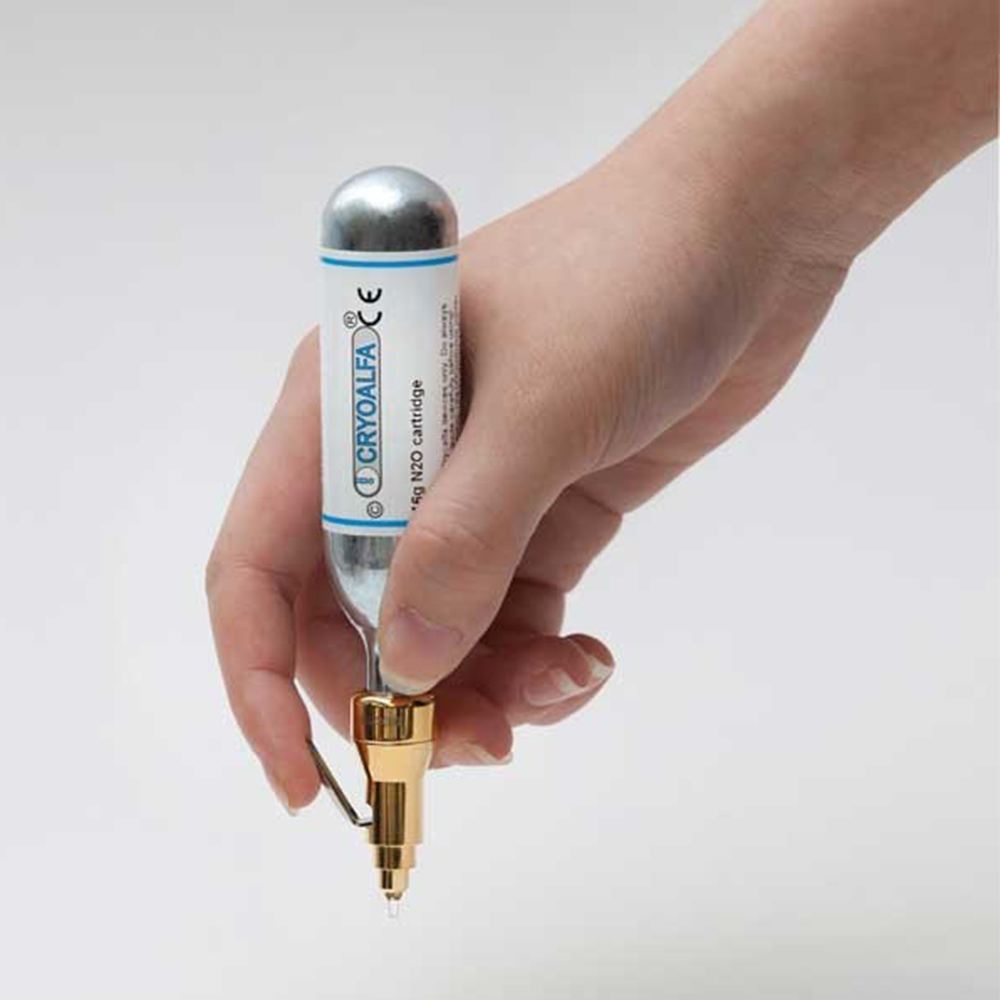Cyotherapy Verruca Treatment
At SoleAmbition every verruca is assessed to determine the best course of action.
On your arrival I will gather some details and I’ll assess the verruca. After this I will talk you through the process and begin treatment. The verruca procedure typically lasts between 15 and 40 minutes.
At the end of your treatment we can have a discussion and address any concerns or questions you may have.

Verrucas Or Plantar Warts
What are they?
They are localised thickenings of the skin, the term ‘plantar warts’ is used for those that occur on the soles of the feet. They are also known as verrucas.
What causes verrucas?
Verrucas are caused by infection in the outer layer of the skin by a virus called the ‘human papilloma virus’. Infection makes the skin over-grow and thicken, leading to a benign (non-cancerous) skin growth (the wart).
Verrucas are caught by contact with infected skin scales – an example would be from the floors of public locker rooms, shower cubicles and the areas around swimming pools. The virus enters the skin through tiny breaks in the skin surface. Moistness of the skin on the feet probably makes infection with the virus easier.
What are the symptoms of verrucas?
Some verrucas can be uncomfortable, particularly if they are present on a weight-bearing area. ‘Mosaic’ warts (cluster verruca) are usually painless.
What do verrucas look like?
Verrucas can occur anywhere on the soles and toes, and often affect the weight-bearing areas. They may have a rough surface that protrudes from the skin surface. Close inspection may reveal small black dots. The term ‘mosaic verruca’ is used for tightly packed clusters of small verrucas that resemble a mosaic.
Can verrucas be cured?
There is no guaranteed cure, but some treatments can help. The best chance of eradication is in young people who have not had their warts for very long. If you have an illness that affects your immunity or are taking immunosuppressant medication, treatment can be less successful. Most verrucas will clear in time and can be left untreated if not causing problems. When deciding whether to treat plantar warts or not, the following should be taken into account:
Warts usually resolve by themselves without leaving a blemish or scar.
Successful treatment of a viral wart does not prevent further warts.
Some warts can be very stubborn. Treatment does not always work and may be time-consuming.
Treating plantar warts can be painful, especially when liquid nitrogen is used, and can occasionally cause a blister which, on the sole, can be very uncomfortable.


How can verrucas be treated?
Treatment options include:
No treatment: Up to 65% of viral warts including plantar warts resolve by themselves without any treatment within two years of appearing. Plantar warts that are not causing any adverse symptoms such as pain should be left alone.
Salicylic acid paints and gels: These are available in different strengths. Salicylic acid works by removing the outer dead layers of skin and triggering the immune system into clearing the virus. Before applying the paint, the feet should be soaked in warm water and thickened skin filed away with a pumice stone or emery board. Care should be taken not to scrape the surrounding normal skin to avoid spreading the virus. Treatment should be daily for at least 12 weeks and is usually most convenient at bed-time. The paint /gel should be applied carefully to the wart, not the surrounding normal skin. If the wart becomes too sore, treatment should be stopped for a few days, then resumed.
Freezing the warts with liquid nitrogen (a very cold gas). Thick warts need to be shaved before freezing to allow the cold to get into the skin. Ideally, cryotherapy should be repeated every three to four weeks. It is painful and may cause blisters and burns, and because of this is not usually recommended in children. Several freezes may be needed to clear warts and it does not always work. Using a salicylic acid preparation in between freezes may improve the effectiveness.
Duct Tape: Although there is conflicting evidence regarding the effectiveness of duct tape in the treatment of cutaneous warts, it might still be well worth trying, especially in children. The wart should be occluded with duct tape for six days, and if the tape falls off it should be replaced with a fresh piece. The tape should then be removed and the affected area soaked in luke-warm water and the wart pared down to remove any dead skin cells. The wart should then be left uncovered overnight and the duct tape reapplied once again in the morning. This can be continued for up to two months.
These are just some of the methods used to treat verrucas and not the full list.
What can you do?
Wear comfortable shoes and do not share your shoes or socks with anyone else.
Keep your feet clean and dry. Change your shoes and socks regularly.
Do not go barefoot in public places. Verrucas should be covered with waterproof plasters or rubber ‘verruca socks’ if you go swimming.
Apply topical treatment regularly to get the maximum chance of cure, be persistent.
Do not use same foot file, nail file and or clippers for your warts and your healthy skin and nails.
